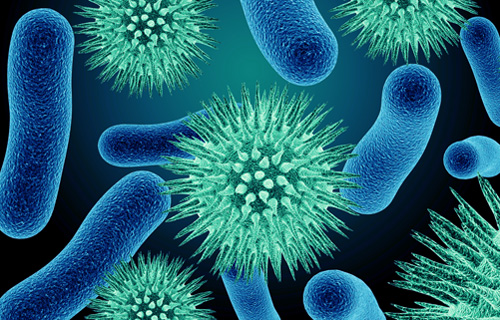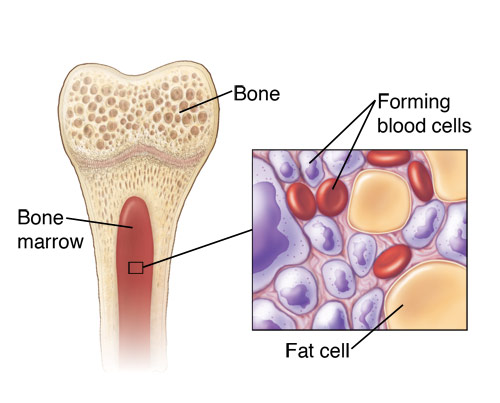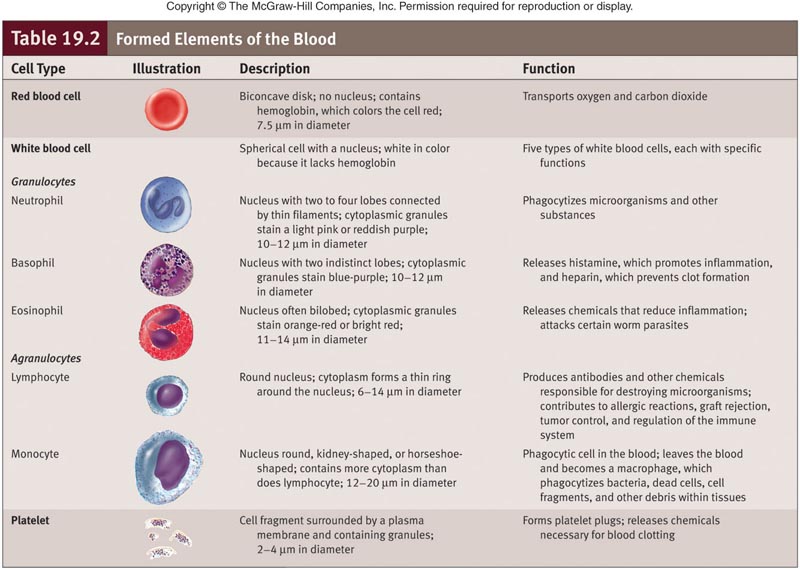WHITE BLOOD CELL: THE ARMY
By: Amirul Fikri
Hi guys!!!
Have you ever wonder why you got sick?
Hi guys!!!
Have you ever wonder why you got sick?
Have you ever wonder what is the defensive system in our body?
Who are the one that willing to sacrifice for us to live more longer?
I have always wonder about it since child especially when I became sick. I wonder how I became healthy again, after got a very painful fever and only thinking about death at that time. Very funny to flashback about it but it is the truth when I cried and ask for forgiveness to my parents when got fever. But when recovered, I felt like I have the same power like wolverine in X-men.
But when I pursue my studies in medical subject, I realized that there were some bad thing that always got jealousy to our health and some good thing in our body which fighting back and sacrificed for our health. The bad thing that always got jealous to the body health is called pathogens. This pathogens which including viruses, bacteria, fungi, protozoa and worms attacks or infects the body and tried to destroy the system in the body.

However, their suicide mission became difficult and impossible since there were good things that protect the body from being attacked by pathogens which called as WHITE BLOOD CELLS (WBC).

Who are the one that willing to sacrifice for us to live more longer?
I have always wonder about it since child especially when I became sick. I wonder how I became healthy again, after got a very painful fever and only thinking about death at that time. Very funny to flashback about it but it is the truth when I cried and ask for forgiveness to my parents when got fever. But when recovered, I felt like I have the same power like wolverine in X-men.
But when I pursue my studies in medical subject, I realized that there were some bad thing that always got jealousy to our health and some good thing in our body which fighting back and sacrificed for our health. The bad thing that always got jealous to the body health is called pathogens. This pathogens which including viruses, bacteria, fungi, protozoa and worms attacks or infects the body and tried to destroy the system in the body.

Example of pathogens

White Blood Cell (WBC)
WBC which also called as leukocytes is one of the component of our blood system, that also made up of red blood cell, platelets and plasma. WBC account for only about 1% of the blood, which flow through our bloodstream to battle with the pathogen that threaten our health.
When our body is in distress and the part of our body is under attack, this WBC will rush in, to help destroy that harmful substance and prevent illness.
But, do you guys know where are the location for production of WBC?
Hmmmm......



When our body is in distress and the part of our body is under attack, this WBC will rush in, to help destroy that harmful substance and prevent illness.
But, do you guys know where are the location for production of WBC?
Hmmmm......

Actually, WBC are produced in certain parts of the bone that we called as the bone marrow. This bone marrow can be found mainly in the flat-shaped bones such as our hip bone, skull, ribs, vertebrae and also in the inner part at the end of our long bones such as femur that are the thigh bone.

Bone marrow location
Next, after WBC being produced, they are stored in our blood and lymphatics tissue. There are some types of WBC that have a short lifespan on one to three days, so that our bone marrow is constantly making them.
On top of that, WBC are divided into five classes which have difference appearance microscopically and differ in their function but with the same mission to protect and defend the body against infectious invaders. These classes are including neutrophils, lymphocytes, monocytes, eosinophils and basophils.
NEUTROPHILS

Neutrophils is the types of WBC that are the most abundant in our body since bone marrow produces approximately 100 billions these WBC daily. These neutrophils made up 60% to 70% of all WBC found in our bloodstream.
Microscopically, they are found with 2 to 5 lobes of nucleus which connected by thin strands of chromatin. The size of this cells are about 10 to 12 µm in diameter which means that they are a little bit larger than red blood cell that only size 7 to 8 µm in diameter. Their cytoplasm is fine with the pale lilac granules scattered.







Microscopically, they are found with 2 to 5 lobes of nucleus which connected by thin strands of chromatin. The size of this cells are about 10 to 12 µm in diameter which means that they are a little bit larger than red blood cell that only size 7 to 8 µm in diameter. Their cytoplasm is fine with the pale lilac granules scattered.
Moreover, neutrophils is the first line of defense when infection strikes. Neutrophils play a crucial role in fighting infections, especially bacterial and fungal infections. They are undergoes phagocytosis, meaning that they surround and engulf invading germs, which are then killed and digested. They are migrate through blood vessel walls into the body tissues in response to chemical signals triggered when an infectious invasion occurs.

Phagocytosis process
LYMPHOCYTES
Lymphocytes is the second most abundant of WBC found in the bloodstream, which range about 20% to 25% of WBC. This size of this cell are varies which the small lymphocytes are 6 µm to 9 µm in diameter, meanwhile the large lymphocytes are 10 µm to 14 µm in diameter. But, their nucleus is round or slightly intended with cytoplasm forms rim around nucleus that looks sky blue. The larger the cell of lymphocytes, the more cytoplasm is visible.
Lymphocytes can be divided in three types which are T cells, B cells and natural killer cells. The main function of them are for mediate immune responses and including antigen-antibody reactions.

On top of that, humoral immunity mediated by antibody molecules that are secreted by plasma cells are shown like that:

MONOCYTES

Next, monocytes are also one of the types of WBC which range about 3% to 8% of WBC. The size of this cell are about 12 µm to 20 µm in diameter which are the largest WBC found in the body. Microscopically, their nucleus looked like kidney or horseshoe shaped while their cytoplasm is in blue to gray in colour and appears foamy.
Monocytes have several functions in ward off the disease and infection which are including monocytes munch, mount and mend. Firstly in munch, monocytes transforming into fixed or wandering macrophages before facing the pathogens. They, will undergoes phagocytosis which are actually consume or munch harmful bacteria, fungi and viruses. Then, enzymes in the monocytes will kill and break down the pathogens into pieces.
Other than that, monocytes also assists other WBC in identify and recognized the types of pathogens that have invaded our body. The monocytes take parts of pathogens called antigens after consuming them, and mount the outside their body like flags. This helps other WBC see the antigens and make antibodies designed to kill that specific types of pathogens.
Besides, monocytes also help mend damaged tissue by stopping the inflammation process from being continued. They repaired the wounds by remove dead cells from the sites of infection.
EOSINOPHILS

Eosinophils made up 2% to 4% of all WBC found in the body. They have 10 µm to 12 µm in diameter which are same size with neutrophils. Their nucleus are usually found with 2 lobes connected by thick strands of chromatin and they also have large red to orange granules that fill cytoplasm but not cover or obscure the nucleus.
The functions of the eosinophil are varied and some of which are very similar to other WBC. But, eosinophil plays the important role in combating the effects of histamine which are allergic reactions by releasing histaminases. Then, they also function in phagocytize antigen-antibody complexes and destroy certain parasitic worms.
BASOPHILS

Basophils is the least types of WBC which found only about 0.5% to 1.0% in our body. They are in small size which are about 8 µm to 10 µm in diameter. Microscopically, round and variable sized granules can be found in their cytoplasm that stained in blue to purple with basic dyes. These granules commonly obscure the nucleus that have the two lobes.
This cells appear in many specific kinds of inflammatory reactions, particularly release or liberate heparin, histamine and serotonin in allergic reactions that intensify overall inflammatory response. Anticoagulant heparin from basophils functions in prevents blood from clotting too quickly, meanwhile histamine promotes blood flow to tissues.
Lastly, this is the summary of all forced elements in our blood:

That all from me!
Keep updated our blog!
See you in the next blog!
Bye guys!!!




Comments
Post a Comment